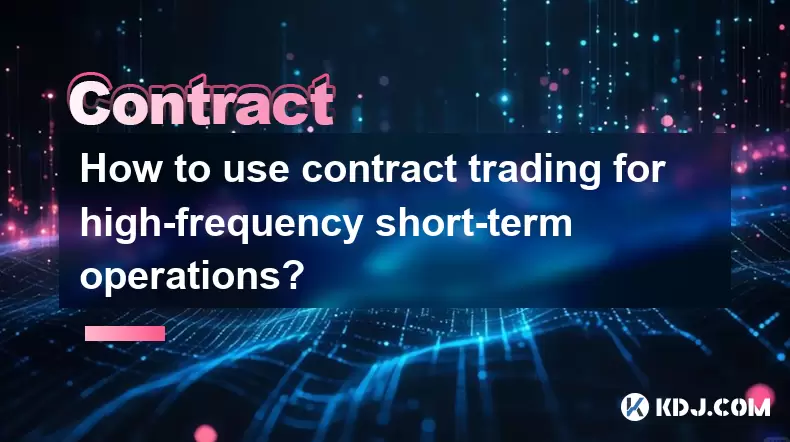-
 Bitcoin
Bitcoin $105,278.9859
4.61% -
 Ethereum
Ethereum $2,414.7741
8.20% -
 Tether USDt
Tether USDt $1.0007
0.05% -
 XRP
XRP $2.1600
7.53% -
 BNB
BNB $639.5433
3.75% -
 Solana
Solana $144.3830
9.37% -
 USDC
USDC $1.0001
0.02% -
 TRON
TRON $0.2742
3.84% -
 Dogecoin
Dogecoin $0.1640
8.57% -
 Cardano
Cardano $0.5811
7.49% -
 Hyperliquid
Hyperliquid $37.2466
5.28% -
 Sui
Sui $2.8243
14.84% -
 Bitcoin Cash
Bitcoin Cash $460.8816
2.22% -
 Chainlink
Chainlink $12.9580
11.75% -
 UNUS SED LEO
UNUS SED LEO $9.1359
1.23% -
 Avalanche
Avalanche $18.2302
10.30% -
 Stellar
Stellar $0.2463
7.80% -
 Toncoin
Toncoin $2.9151
7.18% -
 Shiba Inu
Shiba Inu $0.0...01163
9.79% -
 Hedera
Hedera $0.1532
14.01% -
 Litecoin
Litecoin $85.3310
6.29% -
 Monero
Monero $308.8215
2.90% -
 Ethena USDe
Ethena USDe $1.0007
0.03% -
 Polkadot
Polkadot $3.4259
9.42% -
 Dai
Dai $1.0002
0.01% -
 Bitget Token
Bitget Token $4.1742
3.19% -
 Uniswap
Uniswap $6.8272
8.53% -
 Pepe
Pepe $0.0...09939
12.29% -
 Pi
Pi $0.5358
6.03% -
 Aave
Aave $257.3092
12.83%
How to use contract trading for high-frequency short-term operations?
High-frequency short-term contract trading in crypto leverages derivatives like futures and perpetual swaps, using algorithmic strategies and real-time data to execute rapid trades amid market volatility.
Jun 24, 2025 at 08:14 am

Understanding High-Frequency Short-Term Contract Trading
High-frequency short-term contract trading involves leveraging derivative contracts, such as futures or perpetual swaps, to make rapid trades within a very short time frame — often seconds or minutes. This form of trading relies heavily on market volatility, algorithmic strategies, and real-time data processing. In the cryptocurrency market, where price movements can be swift and unpredictable, this method offers both opportunities and risks.
Cryptocurrency derivatives are essential tools for high-frequency traders due to their inherent leverage and liquidity.
Setting Up the Right Infrastructure
Before engaging in high-frequency contract trading, traders must ensure they have the correct technical setup. This includes:
- A reliable and fast internet connection
- A low-latency trading platform or API access
- A powerful computer with sufficient RAM and CPU
- Access to real-time market data feeds
Most professional traders use automated trading bots or custom scripts that connect via exchange APIs like those provided by Binance, Bybit, or KuCoin. These systems execute trades faster than human reaction times, which is crucial in high-frequency environments.
Selecting the Right Exchange and Contracts
Choosing an exchange that supports high-frequency trading (HFT) is vital. Key considerations include:
- Low fees for makers and takers
- Deep liquidity pools for popular pairs (e.g., BTC/USDT)
- Fast order execution speeds
- Stable API performance
Perpetual futures contracts are generally preferred over traditional futures because they do not have expiration dates, allowing for continuous trading positions. Traders should also consider leverage options, although higher leverage increases both potential gains and losses.
Leverage amplifies returns but also multiplies risk, so it should be used cautiously in high-frequency setups.
Developing a Trading Strategy
Successful high-frequency contract trading requires a well-defined strategy. Common approaches include:
- Arbitrage: Exploiting price differences between exchanges or markets
- Market making: Placing buy and sell orders close to the current price to capture spreads
- Statistical arbitrage: Using mathematical models to identify mispriced assets
- News-based trading: Reacting instantly to breaking news using automated triggers
Each strategy must be tested rigorously through backtesting using historical data before deployment. Paper trading or demo accounts are also useful for refining tactics without risking real capital.
Implementing Risk Management Measures
Given the speed and volume of transactions in high-frequency trading, risk management is critical. Important measures include:
- Setting stop-loss orders on all open positions
- Limiting position sizes per trade
- Monitoring drawdown thresholds
- Ensuring fail-safe mechanisms for bot malfunctions
Traders should also maintain a dedicated trading account with clear separation from personal funds. Over-leveraging should be avoided at all costs, especially when executing dozens or hundreds of trades per day.
Monitoring Performance and Adjusting Parameters
Once a high-frequency contract trading system is live, constant monitoring is necessary. Traders should track key performance indicators such as:
- Win rate percentage
- Average profit per trade
- Maximum drawdown
- Trade frequency per hour/day
Adjustments may need to be made to parameters like entry conditions, exit logic, or even the underlying strategy if market conditions change. Some traders use machine learning algorithms to adapt strategies dynamically based on new data inputs.
Frequently Asked Questions
Q: Is high-frequency contract trading suitable for beginners?
A: Due to its complexity, reliance on automation, and high risk, it's generally recommended only for experienced traders with strong technical skills and deep market understanding.
Q: Can I manually perform high-frequency trades without a bot?
A: While technically possible, manual execution lacks the speed and precision required for effective high-frequency trading. Automated systems are far more efficient in this context.
Q: What is slippage, and how does it affect contract trading?
A: Slippage occurs when a trade executes at a different price than intended, typically during volatile market conditions. It can significantly impact profitability in high-frequency setups where small price changes matter.
Q: Do I need to pay taxes on profits from high-frequency contract trading?
A: Tax obligations depend on jurisdiction, but most countries treat cryptocurrency trading profits as taxable income. Always consult a tax professional familiar with crypto regulations.
Disclaimer:info@kdj.com
The information provided is not trading advice. kdj.com does not assume any responsibility for any investments made based on the information provided in this article. Cryptocurrencies are highly volatile and it is highly recommended that you invest with caution after thorough research!
If you believe that the content used on this website infringes your copyright, please contact us immediately (info@kdj.com) and we will delete it promptly.
- Anthony Pompliano's ProCap: A Bitcoin Treasury SPAC Deal Redefining Finance
- 2025-06-24 12:25:13
- PEPE Coin vs. Ozak AI: Making a Long-Term Bet in the Meme Coin Frenzy
- 2025-06-24 12:25:13
- Ripple (XRP): Breakout Potential or Bust? Decoding the Latest Buzz
- 2025-06-24 12:45:13
- XRP, Ripple, Valuation: Decoding the Future Price
- 2025-06-24 12:45:13
- Midnight Airdrop: Grab Your Free NIGHT Tokens, Ya'll!
- 2025-06-24 13:07:11
- US-Iran Nuclear Deal: Crypto Bettors Weigh In
- 2025-06-24 12:50:13
Related knowledge

How to use the price slope to filter the false breakthrough signal of the contract?
Jun 20,2025 at 06:56pm
Understanding the Concept of Price Slope in Contract TradingIn contract trading, especially within cryptocurrency derivatives markets, price slope refers to the rate at which the price changes over a specific time period. It helps traders assess the strength and sustainability of a trend. A steep slope may indicate strong momentum, while a shallow slope...

How to determine the expected volatility of the contract through the volatility cone?
Jun 19,2025 at 12:28pm
Understanding the Basics of Volatility in Cryptocurrency ContractsIn the realm of cryptocurrency trading, volatility is a key metric that traders use to assess potential risk and reward. When dealing with futures contracts, understanding how volatile an asset might become over time is crucial for position sizing, risk management, and strategy developmen...

How to formulate a contract intraday trading plan in combination with the pivot point system?
Jun 21,2025 at 03:42pm
Understanding the Basics of Pivot Points in Cryptocurrency TradingPivot points are technical analysis tools used by traders to identify potential support and resistance levels. These levels are calculated using the previous day's high, low, and closing prices. In the context of cryptocurrency trading, where markets operate 24/7, pivot points help trader...

How to adjust the contract position ratio through the price fluctuation entropy?
Jun 22,2025 at 11:42am
Understanding Price Fluctuation Entropy in Cryptocurrency ContractsIn the world of cryptocurrency futures trading, price fluctuation entropy is a relatively new concept used to measure market volatility and uncertainty. It derives from information theory, where entropy refers to the degree of randomness or unpredictability in a system. In crypto contrac...

How to use the volume swing indicator to predict the contract volume-price divergence?
Jun 18,2025 at 11:42pm
Understanding the Volume Swing IndicatorThe volume swing indicator is a technical analysis tool used primarily in cryptocurrency trading to evaluate changes in volume over time. Unlike price-based indicators, this metric focuses solely on trading volume, which can provide early signals about potential market reversals or continuations. The key idea behi...

How to use the Gaussian channel to set the contract trend tracking stop loss?
Jun 18,2025 at 09:21pm
Understanding the Gaussian Channel in Cryptocurrency TradingThe Gaussian channel is a technical indicator used primarily in financial markets, including cryptocurrency trading, to identify trends and potential reversal points. It is based on statistical principles derived from the normal distribution, commonly known as the Gaussian distribution or bell ...

How to use the price slope to filter the false breakthrough signal of the contract?
Jun 20,2025 at 06:56pm
Understanding the Concept of Price Slope in Contract TradingIn contract trading, especially within cryptocurrency derivatives markets, price slope refers to the rate at which the price changes over a specific time period. It helps traders assess the strength and sustainability of a trend. A steep slope may indicate strong momentum, while a shallow slope...

How to determine the expected volatility of the contract through the volatility cone?
Jun 19,2025 at 12:28pm
Understanding the Basics of Volatility in Cryptocurrency ContractsIn the realm of cryptocurrency trading, volatility is a key metric that traders use to assess potential risk and reward. When dealing with futures contracts, understanding how volatile an asset might become over time is crucial for position sizing, risk management, and strategy developmen...

How to formulate a contract intraday trading plan in combination with the pivot point system?
Jun 21,2025 at 03:42pm
Understanding the Basics of Pivot Points in Cryptocurrency TradingPivot points are technical analysis tools used by traders to identify potential support and resistance levels. These levels are calculated using the previous day's high, low, and closing prices. In the context of cryptocurrency trading, where markets operate 24/7, pivot points help trader...

How to adjust the contract position ratio through the price fluctuation entropy?
Jun 22,2025 at 11:42am
Understanding Price Fluctuation Entropy in Cryptocurrency ContractsIn the world of cryptocurrency futures trading, price fluctuation entropy is a relatively new concept used to measure market volatility and uncertainty. It derives from information theory, where entropy refers to the degree of randomness or unpredictability in a system. In crypto contrac...

How to use the volume swing indicator to predict the contract volume-price divergence?
Jun 18,2025 at 11:42pm
Understanding the Volume Swing IndicatorThe volume swing indicator is a technical analysis tool used primarily in cryptocurrency trading to evaluate changes in volume over time. Unlike price-based indicators, this metric focuses solely on trading volume, which can provide early signals about potential market reversals or continuations. The key idea behi...

How to use the Gaussian channel to set the contract trend tracking stop loss?
Jun 18,2025 at 09:21pm
Understanding the Gaussian Channel in Cryptocurrency TradingThe Gaussian channel is a technical indicator used primarily in financial markets, including cryptocurrency trading, to identify trends and potential reversal points. It is based on statistical principles derived from the normal distribution, commonly known as the Gaussian distribution or bell ...
See all articles
























































































